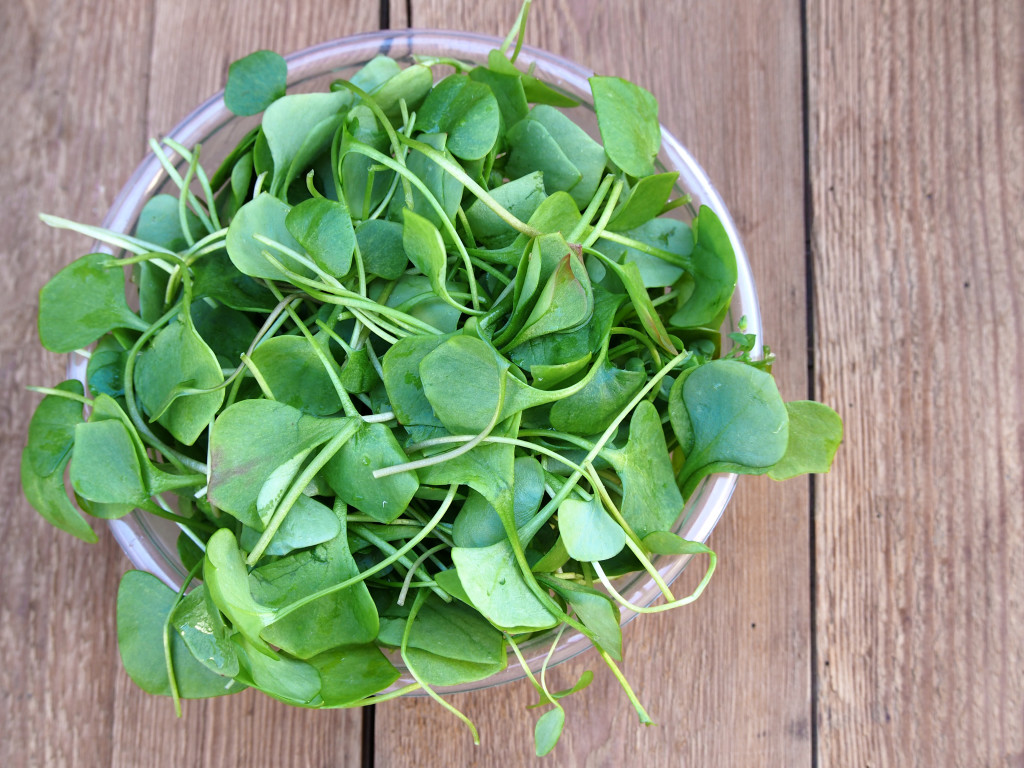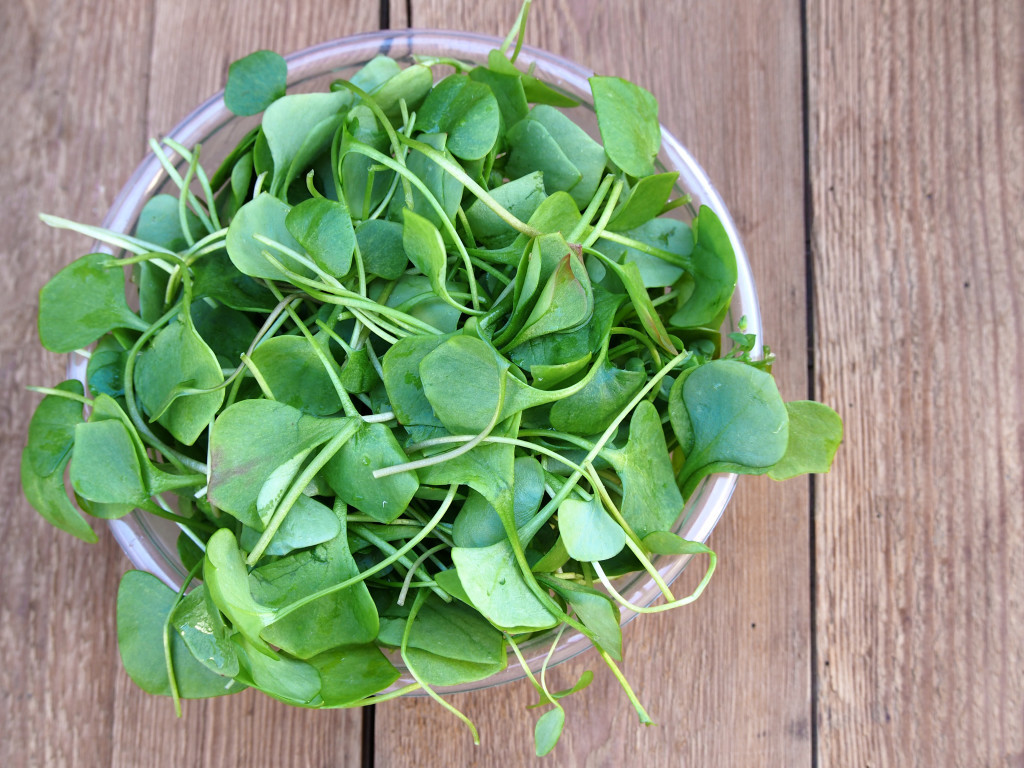
Fresh watercress ready for salad preparation
A ‘superfood’ is a type of food that is especially nutrient-rich and that is packed with anti-oxidants, vitamins, and healthy minerals. These are the foods that should be prominent on our shopping lists and used liberally in our recipes.
By now everyone is familiar with the classic superfoods like kale, goji berries, and quinoa, but the list is in reality much longer than most people realise. The following foods are all exceptionally nutritious, affordable, and capable of being added to a wide variety of dishes.
Watercress
After ranking foods on the United Nations’ and Institute of Medicine’s 17 healthiest nutrients, the U.S. National Centre for Chronic Disease Prevention and Health Promotion concluded that watercress was the very best of all the superfoods, even better than kale, spinach and other leafy vegetables.
It contains plenty of fibre, protein, potassium, calcium, iron, thiamin, riboflavin, niacin, folate, zinc, and vitamins A, B6, B12, C, D, E, and K. It, thus, contains all the nutrients that one needs (Di Noia, 2014).
It has long been known that watercress reduces the likelihood of the development of cancer, but British researchers have now discovered that watercress can starve already-existing cancerous tumours of blood and oxygen by blocking the process whereby they obtain these from surrounding tissue (Sharifah et al., 2010).
It also aids white blood cell health, it boosts antioxidants like lutein and beta-carotene, and it reduces the chance of cataracts and age-related macular degeneration (Gill et al., 2006).
It is a great addition to salad, sandwiches, smoothies, stir-fries, and pasta, but it should ideally remain uncooked.
Turmeric or Curcumin
If you enjoy a good curry, you are lucky. Curcumin is an ingredient in turmeric, which is, in turn, the substance that gives curry its yellow colour. You can consume curcumin either in a curry or as a dietary supplement, but even the strongest curry falls short of the amount needed to reap the health benefits summarised below.
Curcumin is a useful anti-inflammatory, which makes it an ally not only in the fight against injury-related inflammation and arthritis (Davis et al., 2007; Funk et al., 2006), but also against chronic low-level inflammation that has been found to be a contributing factor to cardiovascular disease, diabetes, many types of cancer, and Alzheimer’s Disease (White & Judkins, 2011).
While studies show that it matches the strength of many common anti-inflammatories (Takada, Bhardwaj, Potdar, & B., 2004), it certainly cannot prevent or treat these diseases all by itself, but research does show that those who consume it fare better than those who do not.
Curcumin is known for its antioxidant properties, which basically means that it slows the oxidative damage that our bodies undergo as they age or get injured (Phan, See, Lee, & Chan, 2001).
While many of us think of aging as a matter of outward appearance, the more important age-related damage to our bodies occur inside the cells of all our life-sustaining organs. With lower levels of oxidative damage, we will not only look better, but feel and function better.
For those who value their cognitive and emotional health, curcumin has been shown to increase brain-derived neurotrophic factor (BDNF) (Xu et al., 2006). A shortage of BDNF has been linked to dementia, Alzheimer’s disease and even depression (Shimizu et al., 2003). Curcumin can, thus, protect our intellectual abilities from deteriorating and can serve as an anti-depressant that some research shows may be as effective as commonly prescribed anti-depressants (Sanmukhani et al., 2014).
Garlic
Garlic does not only taste good when added to stews, soups, and sauces, but it is also packed with phyto-nutrients, antioxidants, manganese, selenium, phosphorous, and vitamins B6 and C.
It has been found to help with cardiovascular disease, primarily by lowering blood pressure and by acting as a blood thinner that prevents blood clotting (Ackermann et al., 2001; Silagy & Neil, 1994). Some research also suggests that it lowers cholesterol and prevents hardening of arteries, but at this stage the scientific literature is still inconsistent.
Researchers do agree, however, that consumers of raw or cooked garlic have lower rates of colon, stomach and oesophageal cancer, and that garlic can boost the immune systems of those who already have cancer (Durak, Yilmaz, & Devrim, 2003; Fleischauer, Poole, & Arab, 2000). It also helps the immune system prevent and combat the common cold (Josling, 2001).
Chia Seeds
Chia seeds may be small, but they contain a massive amount of fibre, protein, omega 3 oil, manganese, magnesium, phosphorus, and calcium. They serve as a good source of quality non-animal protein for vegetarians and vegans, and their high fibre content slows the digestion of food, which in turn increases the likelihood that it will be used for energy instead of stored as fat.
Contrary to popular belief, however, researchers have not found that chia seeds promote weight loss, probably because so many people have generally poor eating habits. Still, they have been found to reduce appetite, which may be a godsend for those who want to eat less (Vuksan et al., 2010).
They are also loaded with antioxidants to slow the aging of all the cells in our bodies (Martínez-Cruz & Paredes-López, 2014), and since they taste so good when sprinkled on almost anything, they are easy to add to our diets.
Cacao Powder and Nibs
Certainly surprising, reasonably affordable, and above all, delicious. Cacao beans can be processed in numerous ways, of which the powder and nibs are the healthiest. The cocoa powder that many of us use to make the hot drink is obtained from the same bean, but is processed at high temperatures and often mixed with sugar. If you cannot find cacao, buy cocoa powder without added sugar which has most of the same nutrients and health benefits.
Cacao is jammed with mono-unsaturated and cholesterol-free saturated fats, which are the healthy fats the body needs to warm itself and protect its organs from damage. It is fibre, vitamin, and protein rich. It contains lots of necessary minerals like potassium, iron, calcium, zinc, magnesium, copper, and phosphorus, and vast amounts of phytochemicals like flavanols, flavonoids, and quercetin.
It has been found to lower blood pressure, cholesterol, and blood platelet inflammation, thereby aiding cardiovascular health (Corti, Flammer, Hollenberg, & Lüscher, 2009; Ding, Hutfless, Ding, & Girotra, 2006).
The caffeine it contains serves as a useful energy booster. It helps combat allergies and some types of bacteria (Abril-Gil et al., 2012; Niehues, Stark, Keller, Hofmann, & Hensel, 2011). It reduces the likelihood of diabetes by suppressing insulin resistance (Katz, Doughty, & Ali, 2011). It should be taken in moderation, however, since large amounts will result in weight gain. Use the powder to bake chocolate dishes and mix into drinks, and sprinkle the nibs on everything from cereal to salad.
Good for Your Health and Your Wallet
These superfoods demonstrate that food can be healthy without breaking the bank or irritating the taste buds. And that some of the most nutritious foods are those we have seen in the supermarket a hundred times over.
References:
- Abril-Gil, M., Massot-Cladera, M., Pérez-Cano, F. J., Castellote, C., Franch, A., & Castell, M. (2012). A Diet Enriched with Cocoa Prevents IgE Synthesis in a Rat Allergy Model. Pharmacological Research, 65(12), 603-608.
- Ackermann, R.T., Mulrow, C.D., Ramirez, G., Gardner, C. D., Morbidoni, L., & Lawrence, V. A. (2001). Garlic Shows Promise for Improving Some Cardiovascular Risk Factors. Archives of Internal Medicine, 161, 813-824.
- Corti, Roberto, Flammer, Andreas J., Hollenberg, Norman K., & Lüscher, Thomas F. (2009). Contemporary Reviews in Cardiovascular Medicine:Cocoa and Cardiovascular Health. Circulation, 119, 1433-1441.
- Davis, J. M., Murphy, E. A., Carmichael, M. D., Zielinski, M. R., Groschwitz, C. M., Brown, A. S., . . . Mayer, E. P. (2007). Curcumin Effects on Inflammation and Performance Recovery Following Eccentric Exercise-Induced Muscle Damage. American Journal of Physiology. Regulatory, Integrative and Comparative Physiology.
- Di Noia, Jennifer. (2014). Defining Powerhouse Fruits and Vegetables: A Nutrient Density Approach. Retrieved March 25, 2015, from http://www.cdc.gov/pcd/issues/2014/13_0390.htm
- Ding, E. L., Hutfless, S. M., Ding, X., & Girotra, S. (2006). Chocolate and Prevention of Cardiovascular Disease: A Systematic Review. Nutrition & Metabolism, 3(2).
- Durak, I., Yilmaz, E., & Devrim, E. (2003). Consumption of Aqueous Garlic Extract Leads to Significant Improvement in Patients with Benign Prostate Hyperplasia and Prostate Cancer. Nutrition research, 23, 199-204.
- Fleischauer, A.T., Poole, C., & Arab, L. (2000). Garlic Consumption and Cancer Prevention: Meta-Analyses of Colorectal and Stomach Cancers. American Journal of Clinical Nutrition, 72, 1047-1052.
- Funk, J. L., Frye, J.B., Oyarzo, J.N., Kuscuoglu, N., Wilson, J., & McCaffrey, G. (2006). Efficacy and Mechanism of Action of Turmeric Supplements in the Treatment of Experimental Arthritis. Arthritis Rheum, 54(11), 3452-3464.
- Gill, Chris I. R., Haldar, Sumanto, Boyd, Lindsay A., Bennett, Richard, Whiteford, Joy, Butler, Michelle, . . . Rowland, Ian R. (2006). Watercress Supplementation in diet Reduces Lymphocyte DNA Damage and Alters Blood Antioxidant Status in Healthy Adults. American Journal of Clinical Nutrition, 85(2), 504-510.
- Josling, P. (2001). Preventing the Common Cold with a Garlic Supplement: A Double Blind, Placebo-Controlled Survey. Advances in Therapy, 18(4), 189-193.
- Katz, D. L., Doughty, K., & Ali, A. (2011). Cocoa and Chocolate in Human Health and Disease. Antioxidants & Redox Signaling, 15(10), 2779-2811.
- Martínez-Cruz, O., & Paredes-López, O. (2014). Phytochemical Profile and Nutraceutical Potential of Chia Seeds. Journal of Chromatography A, 1346(43-48).
- Niehues, M., Stark, T., Keller, D., Hofmann, T., & Hensel, A. (2011). Antiadhesion as a Functional Concept for Prevention of Pathogens: N-Phenylpropenoyl-L-amino Acid Amides as Inhibitors of the Helicobacter Pylori BabA Outer Membrane Protein. Molecular Nutrition & Food Research, 55(7), 1104-1117.
- Phan, T. T., See, P., Lee, S. T., & Chan, S. Y. (2001). Protective Effects of Curcumin against Oxidative Damage on Skin Cells in Vitro: Its Implication for Wound Healing. Journal of Trauma, 51(5), 927-931.
- Sanmukhani, J., Satodia, V., Trivedi, J., Patel, T., Tiwari, D., Panchal, B., . . . Tripathi, C. B. (2014). Efficacy and Safety of Curcumin in Major depressive Disorder: A Randomized Controlled Trial. Phytotherapy Research, 28(4), 579-585.
- Sharifah, S. Syed, Alwi, Breeze E., Cavell, Urvi, Telang, Marilyn E., Morris, Barbara M., & Parry, Graham Packham. (2010). In Vivo Modulation of 4E Binding Protein 1 (4E-BP1) Phosphorylation by Watercress: A Pilot Study. British Journal of Nutrition, 1.
- Shimizu, Eiji, Hashimoto, Kenji, Okamura, Naoe, Koike, Kaori, Komatsu, Naoya, Kumakiri, Chikara, . . . Iyo, Masaomi. (2003). Alterations of Serum Levels of Brain-Derived Neurotrophic Factor (BDNF) in Depressed Patients with or without Antidepressants. Biological Psychiatry, 54(1), 70-75.
- Silagy, C. A., & Neil, A. W. (1994). A Meta-Analysis of the Effect of Garlic on Blood Pressure. The Journal of Hypertension, 12, 463-468.
- Takada, Y., Bhardwaj, A., Potdar, P., & B., Aggarwal. B. (2004). Nonsteroidal Anti-Inflammatory Agents Differ in Their Ability to Suppress NF-kappaB Activation, Inhibition of Expression of Cyclooxygenase-2 and Cyclin D1, and Abrogation of Tumor Cell Proliferation. Oncogene, 23(57), 9247-9258.
- Vuksan, V., Jenkins, A. L., Dias, A. G., Lee, A. S., Jovanovski, E., Rogovik, A. L., & Hanna, A. (2010). Reduction in Postprandial Glucose Excursion and Prolongation of Satiety: Possible explanation of the Long-Term Effects of Whole Grain Salba (Salvia Hispanica L.). European Journal of Clinical Nutrition, 64, 436–438.
- White, B., & Judkins, D. Z. (2011). Does Turmeric Relieve Inflammatory Conditions? Journal of Pharmaceutical Practice, 60(3), 155-156.
- Xu, Ying, Ku, Baoshan, Tie, Lu, Yao, Haiyan, Jiang, Wengao, Ma, Xing, & Li, Xuejun. (2006). Curcumin Reverses the Effects of Chronic Stress on Behavior. Brain Research, 1122(1), 56-64.
